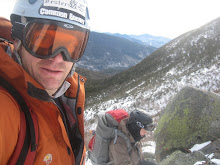
I probably won't read "Low Back Disorders..." cover-to-cover like I will "Ultimate Back Fitness..." but I did start reading it and taking notes last night. I approached it like I do any textbook: skim the whole book emphasizing the figures and charts and their captions; then read the preface; then actually start to read it. Seeing as how this is pretty dry text, a few fingers of whiskey (see image) and some Screeching Weasel in the background help make this more enjoyable. Typically when reading or skimming a book like this I mentally note the points that AGREE with my worldview, but seeing as how my normal worldview is what keeps getting
me into this mess, I'm trying really hard to notice those things that CLASH with my current understanding. This won't be hard, since dispelling current "clinical wisdom" is one of the main points of this book.
Here's a couple of comments that caught my eye:
pg 8 Right off the bat, "Ill-advised Rehabilitation Recommendations" include 1) "Strengthen the muscles in the torso to protect the back" (her argues that endurance is more important than strength); 2) "...bend the knees, not the back" (he argues that very few jobs can be performed this way and there are better techniques) and 3) "Tight hamstrings...lead to back troubles" (maybe but not neccessarily). Interestingly enough, immediately after the recent aggravation, I started planning to really start strengthening my (lower) abs and lower back, stretch my hamstrings, and learn to better recruit my torso muscles to stabilize
my spine. I'm getting the feeling that learning to stabilize the spine is where I'm going to be spending the majority of my time.
pg.144 "Should Intra-abdominal Pressure (IAP) Be Increased During Lifting? Generally the answer is no: At least IAP should not be increased conciously..." with the caveat, "very strenuous lifts...will require the build-up of IAP to increase torso stiffness and ensure stability."
pg 150 "Is it advisable to maintain a reasonable level of fitness? ... well-chosen (ed: not situps, apparently) exercise is the most powerful strategy for preventing occupational back troubles."
pg 156 illustrates the proper way to roll-over in bed!
pg 157 "Reducing the risk in athletes. ...Without exception, they had to change the way they trained. Their backs were breaking down for a reason!"
pg 187 "Train to breathe freely while maintaining the stabilizing abdominal wall contractions"
pg 218 "Eliminating Unsafe Exercises" where three exercises are listed as "inappropriate exercises" that have been "prescribed for people with low back difficulties": sit-ups, leg raises, "traditional extensor exercises" (think back extensions and those "back extension" machines).
pg 239 "Training to Squat and Power Clean...If perfect starting position cannot be obtained, then other means are needed. Many great atheletes can not do these lifts."
SOUNDTRACK: "Three Sides" by Screeching Weasel from one of the all-time great pop-punk records "Anthem for a New Tommorrow". The lyrics "Three sides to every stupid question, three sidees to everything you see" struck me as appropriate last night as I look to challenge what I think I know about my back and my health.

No comments:
Post a Comment